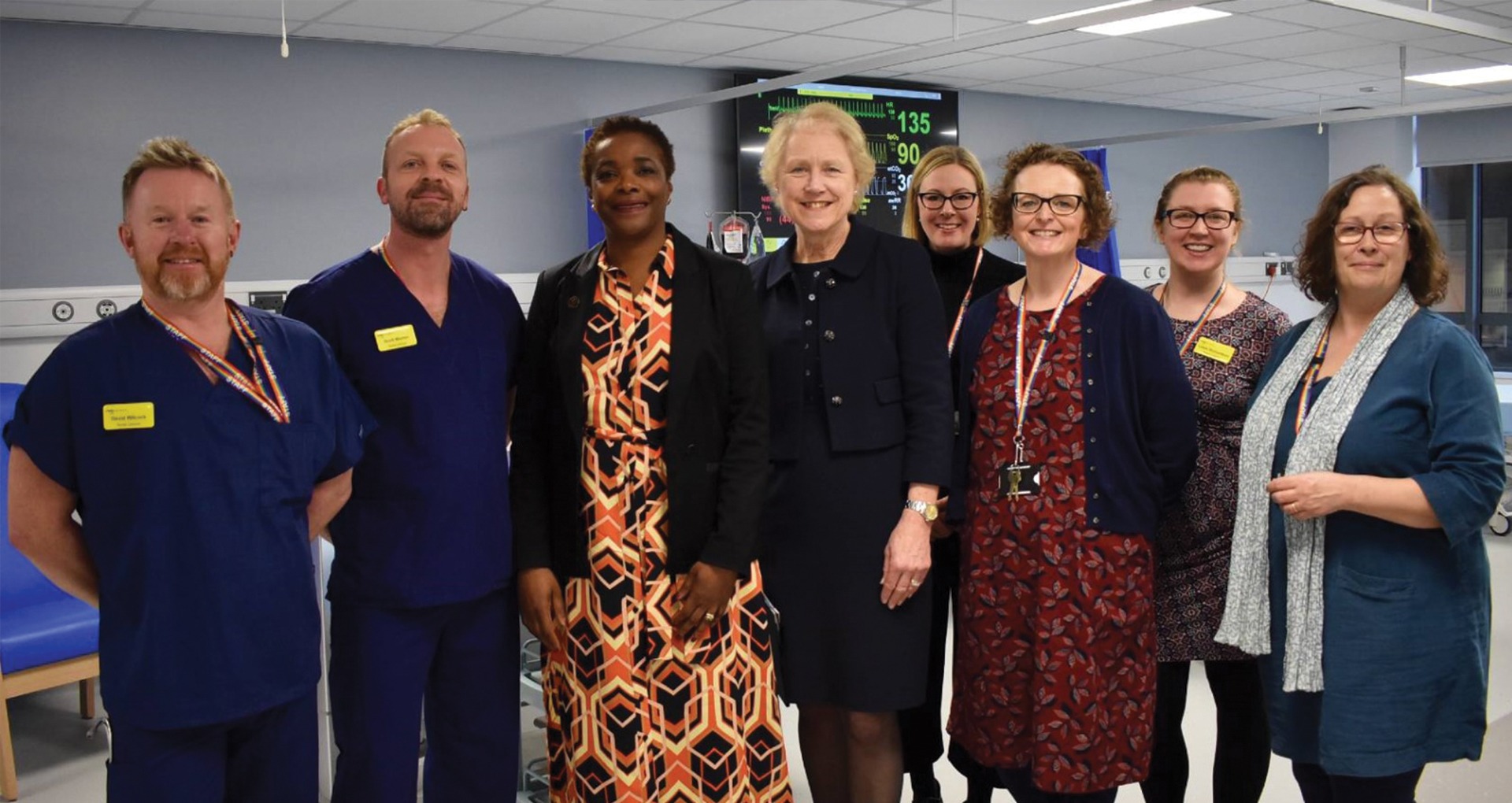Select a Category

Region’s Head of Nursing opens state-of-the-art health simulation suite at York St John University
Professor Laura Serrant OBE, Health Education England’s Regional Head of Nursing (North East and Yorkshire), officially opens new health education facility for nursing, paramedic science, physiotherapy and occupational therapy courses.
York St John University celebrated the opening of its new health simulation suite yesterday alongside an audience of NHS partners and providers, University staff and students, and other invited guests.
The specialist teaching facilities, which opened for students in September 2022, give nursing, paramedic science, physiotherapy and occupational therapy students an authentic environment where they can develop their skills, alongside classroom and work placement settings in order to deliver safe, effective patient-centred care.
Speaking at the event, Professor Karen Bryan OBE, Vice Chancellor of York St John University said:
“York St John has a long-standing commitment to educating students in preparation for roles that are vitally needed by our society. York St John first opened its doors to trainee teachers in 1841, ensuring that local children could access education. Today, we are educating allied healthcare professionals, nurses, and paramedics of the future, supporting the health and wellbeing of the communities we serve.
“Our new Health Simulation Suite provides a range of state-of-the-art facilities, including two hospital simulation wards, clinical and community environments, and domestic accommodation, in which our students can apply their learning.”
Professor Serrant added:
“Our ability to simulate the reality of practice is absolutely essential if we’re going to safeguard the public. This Health Simulation Suite, with its combination of learning clinical skills, understanding the contribution of other health professionals and the prioritisation required when everyone is in need, is so close to what happens in real life.
“These facilities show just how far we’ve come in health education to ensure that we’ve got sufficient staff, with the right skills, to provide excellent care for the people in our region.”
Medical demonstrations were carried out by students and teaching staff at the event, with guests observing airway management, coronary care management, and high dependency unit scenarios. Visitors also got to see mock general practice in the community consultation suite, live physiotherapy techniques on the ward and a simulated emergency with a team from the Yorkshire Ambulance Service.
The health simulation suite supports more than 500 students who study nursing, paramedic science, physiotherapy and occupational therapy courses. Nursing and paramedic science are new courses offered by York St John, whereas the University has been proudly training physiotherapy students for many years and celebrates 45 years of occupational therapy this year.
The new facilities include two hospital simulation wards, each with their own sluice and separated by a clean room; two large clinical skills rooms for paramedic science; specialist physiotherapy and occupational therapy skills rooms; consultation spaces; and dedicated lecture and seminar spaces. In addition, a mock independent living flat creates a realistic environment for many community-based nursing and allied health roles to further enhance simulation activities.
Each hospital ward contains eight profiling beds, alongside a variety of equipment used in hospital, community and outside scenarios. Stethoscopes, pulse oximeters, urine analysis equipment and ECG machines complement other hospital-based equipment including a resus trolley and drugs cabinet. Clinical skills rooms contain ambulance structures, Realiti 360 paramedic simulation kit bags, synthetic skin for realistic feeling canulations and skinless anatomical manikins, enabling effective simulation of emergency scenarios in the field and to aid understanding of the human body.
Simulation is used across a wide variety of clinical teaching on all courses, alongside theoretical study and placements. Recent paramedic simulations have featured apartment fires and car crash scenes, bringing together multi-professional group collaborations with other allied health courses, as well as students on courses such as policing and journalism. As part of these scenarios, the North Yorkshire Fire & Rescue Service and Yorkshire Ambulance Service are also in attendance to offer industry-standard experience and further their own training.
The University has strong partnerships in the region, with placements shared between the NHS and independent healthcare providers including hospitals, GP surgeries, residential care homes, the Yorkshire Ambulance Service, sports clinics and military rehabilitation units. Upon completion of their degree, graduates are eligible to apply to register with the regulatory body for their profession, putting them in an excellent position for obtaining employment.
Read more about the courses and NHS funding in nursing and allied health at York St John on the University website.


